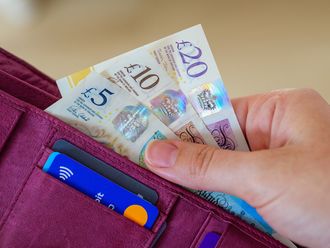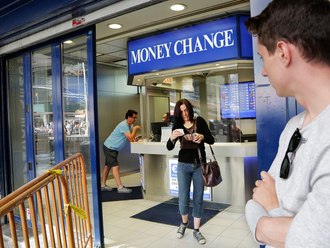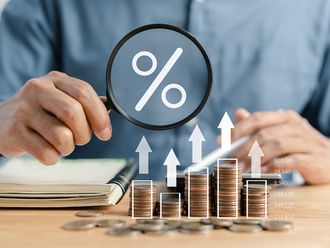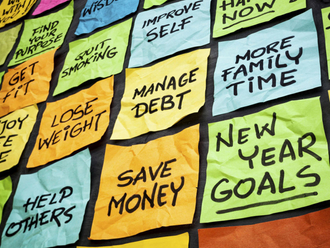
Dubai: When you opt for a credit card cash advance you are essentially withdrawing cash from your credit card account, meaning you’re borrowing against your credit card to put cash in your pocket.
However, there are costs to taking a credit card cash advance and, in some cases, limits on the amount you can withdraw. But does this work like withdrawing cash from any other card?
How does a cash advance work, and what makes it different?
Let’s say you go to your bank or to an ATM and use your credit card to take out money. While the process may seem similar to withdrawing money with a debit card, what you’re really doing is taking a cash advance on your credit card.
“Unlike a debit card withdrawal, in which you’re accessing your own funds, with a cash advance your credit card company is essentially lending you money and charging your account,” said Dubai-based banking and credit analyst Rupesh Naish.
“The charge will likely cost you; cash advances generally have a transaction fee and a higher annual percentage rate (APR). Additionally, there’s usually a limit on how much cash you can get an advance on, and you may also incur transaction fees.”
For example, a 24 per cent APR on a credit card is another way of saying that the interest you're charged over 12 months is equal to roughly 24 per cent of your balance. If the APR is 24 per cent and you carry a Dh1,000 balance for a year, you would owe around Dh236.71 in interest by the end of that year
When to consider using a cash advance on your credit card?
Credit card cash advances come with high fees and high interest rates. Usually, you should try to avoid a cash advance. There may be some circumstances where taking one out isn't the worst idea, such as if you're using it as an alternative to a costly loan for an emergency expense.
“If you must take out a cash advance, it only makes sense to do so when you know you'll have the money to pay it off as fast as you can, else the interest piles up with every passing day,” added Naish. “The balance might tip in favour of a cash advance if you're using a card with no cash advance fee.
“While cash advances can be an important source of funds in an emergency, you don’t want to plan on using cash advances regularly, you might use one if you are short on funds and unable to charge an expense. However, always be sure to consider all your options given the costs.”

Why is it so expensive to take a cash advance on your credit card?
While getting a cash advance is easy, it's one of the costliest ways to get your hands on some cash. This is because cash advances can come with a variety of expenses:
• Interest accrued
“When withdrawing cash using your credit card, among other key costs, the interest amount alone can prove costly in two ways,” said Rajesh Markara, an Abu Dhabi-based debt restructuring advisor.
“First, the interest rate that a credit card charges on cash advances is often much higher than the rate charged on purchases. Second, interest on cash advances usually starts accruing immediately. There's no grace period like you can get with purchases.”
Given the costs associated with taking a cash advance, you may be in dire financial straits if you’re considering one because there aren't enough funds in your bank account
• Cash advance fees
Cash advance fees are charges imposed by your card issuer. Some cards charge a flat fee per cash advance, while others charge a percentage of the amount advanced — often as much as 5 per cent.
Sometimes it's a percentage with a minimum dirham amount — such as 3 per cent or Dh50, whichever is greater. However, most UAE-based banks charge around 2.5 per cent to 3 per cent of the total withdrawal amount as a credit cash advance fee.
• ATM or bank fees
Apart from other fees, there are also ATM or bank fees. These are imposed by the financial institution that handles the transaction — the owner of the ATM or the bank where you get your advance.
“Given the costs associated with taking a cash advance, you may be in dire financial straits if you’re considering one because there aren't enough funds in your bank account,” added Markara. “Cash advances should be used only in extreme emergencies.”
• You will pay a transaction fee for credit card cash advances.
• The APR for cash advances is often higher than the APR for credit card purchases.
• Cash advances often begin accruing interest at the time of the withdrawal, unlike having a grace period, is usually 25 days, the timeframe between your bill cycle's end to the payment due date.
Note: Keep in mind that a credit card grace period is not an extension of your due date. If you pay less than the full balance, miss a credit card payment or pay your bill late, your credit card issuer will charge you interest.
How to lower fees when using your credit card to withdraw cash?
• Understand transaction fees
“Some transaction fees are a percentage of the overall advance; in this case, you could limit the fee by withdrawing only as much as you need,” added Markara.
“Other transaction fees may be a flat rate or a combination of a flat rate and a percentage of the transaction. In this case, if you take all the cash you think you’ll need at once instead of conducting multiple smaller transactions, you’ll pay the flat fee only once.”
• Pay it off fast
For normal transactions, credit card issuers offer a grace period between the purchase and the payment due date when interest kicks in.
However, unlike standard credit card purchases, a cash advance transaction generally begins accruing interest immediately. That means paying off your cash advance in a timely manner is crucial to saving you money in the long-term.

• Find a credit card with better terms
“If you plan to take out a cash advance, you may want to look for a card with lower cash advance fees and a more competitive interest rate, as these can vary by issuer,” added Naish.
How you can avoid taking a cash advance from your credit card?
Here are four ways Naish recommends taking in order to avoid taking a cash advance from your credit card.
• Make purchases with your credit card
You can often limit interest and transaction fees by charging purchases to your card rather than getting a cash advance.
• Build an emergency fund
Occasionally, you’ll need to pay for an unexpected expense. Your emergency fund can help you cover unforeseen costs and avoid using credit card cash advances.
If you plan to take out a cash advance, you may want to look for a card with lower cash advance fees and a more competitive interest rate, as these can vary by issuer
• Monitor your balance
It’s a good idea to keep track of your account balance so that you’re not caught by surprise. If you bank online, you can set up text or email alerts to notify you if your balance drops below a set amount.
• Avoid unnecessary purchases
Ask yourself if the purchase you intend to make with your cash advance is worth the extra fees or if it can wait.












